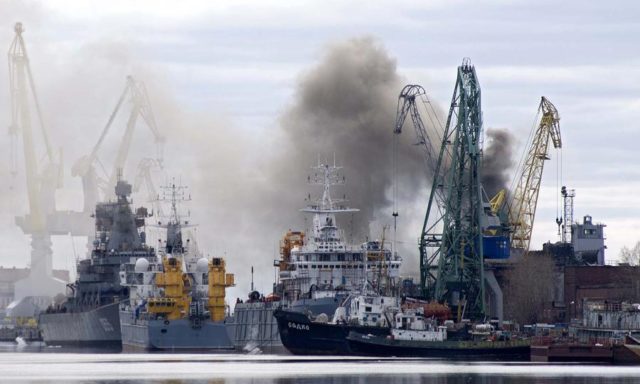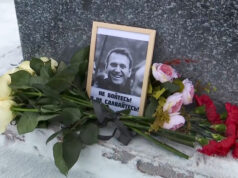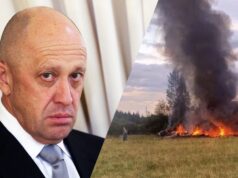
Event Date: August 28, 2019
On August 8 two explosions rocked a Russian weapons testing site on the White Sea near the Arctic Circle and authorities quickly pulled offline four nuclear fallout monitoring stations connected to the Comprehensive Nuclear Test Ban Treaty. News sources, however, reported radiation leakage and seven dead. These included five from Rosatom, Russia’s nuclear agency, a senior official among them.
Why the mystery?
“Most experts think it was a test of a nuclear-propelled hypersonic vehicle,” said Dr. Stephen Bryen, a former deputy undersecretary of defense and an authority on nuclear arms, missile defense and cyberwarfare. Hypersonic weapons, if developed successfully could overcome all existing anti-missile defenses, Bryen told participants in an August 28 Jewish Policy Center conference call.
“That’s why it’s a game changer.”
The Russians are not alone. China apparently is also working on hypersonic weapons development, and Bryen said that just last week the United States cancelled work to upgrade an existing ground-based missile interceptor to come up with “something better” for the dawning hypersonic era.
Hypersonic missiles would travel at five to 20 times the speed of sound (767 miles per hour). Supersonic missiles exist now; the BrahMos supersonic anti-ship cruise missile, jointly developed by Russia and India, reportedly can fly at up to three times the speed of sound, with upgrades to five times in development.
Russian efforts to obscure the August 8 explosion apparently stem from the test weapon’s nuclear-propelled engine. Bryen said that, essentially using the atmosphere for fuel, a hypersonic missile with a nuclear reactor could loiter for hours or days before being ordered to attack a target.
He said Russian officials probably “didn’t want the alarm to spread in the country” that radiation had been released and was drifting south and westward. That would be so especially among a population that remembers the deadly nuclear power plant disaster at Chernobyl in 1986.
Bryen noted that the most recent Russian failure was their third. “Russians have been testing [a hypersonic vehicle], so far not successfully.” Nevertheless, “we are entering an age in which hypersonic weapons will be more and more” common. Not all will be nuclear-powered, but they are “being developed because all air defenses are unable to deal” with their speed.
Using nuclear reactors to power such vehicles is not a new idea, Bryen said. “The United States started as early as 1946” to find power sources for indefinite flight. However, the attempt was abandoned.
From 1961 to 1964, Americans tried again for a supersonic ram-jet engine. (Hypersonic engines are referred to as scram-jets.) “It was tested twice and demonstrated it could work, but it was very risky,” he said. Such engines “spew radioactivity even if used correctly,” and “the test reactor wasn’t shielded.” In operation, it would throw radiation into the atmosphere and along its flight path.
Though current U. S. and even the multi-layered Israeli anti-missile systems could not defeat hypersonic weapons, they would not become obsolete, Bryen pointed out. Threats from conventional short, medium and long-range missiles would remain to be defended against.
But another potential threat to missile defense exists, warheads that can change trajectories. All current anti-missile systems target incoming threats on the basis of constant trajectories. North Korea may be working on weapons that can change their flight paths to circumvent any protective systems the United States and Japan field, he said.
Meanwhile, “the United States has not done well with missile defense,” Bryen noted. “We have none on the East Coast or facing Canada,” over which Russian missiles might fly, a little on the West Coast [basically against North Korea]. There is a missile defense system in Romania, which is only temporary, and we are building a system in Poland, but it will not stop hypersonic missiles.
He said many people have argued, as during the Cold War between the nuclear-armed Soviet Union and United States, that “we should rely on MAD [mutually assured destruction] as the only approach” to deterrence. But “that’s not the approach Israel has taken, nor the United States on the West Coast regarding North Korea.” Now, “with hypersonic weapons, it’s more pressing, but we’re not even close.”
Given the Russians’ recent failures, there may be an opening to discuss controlling nuclear-powered hypersonic vehicles, and it might be possible to expand the 1963 Limited Test Ban treaty to cover them, if the Russians are willing. But, said Bryen, China would have to be included, and “the Chinese have not accepted any arms control” initiatives.
The United States should expect, then, proliferation of hypersonic weapons and prepare both tactical and strategic defenses.





